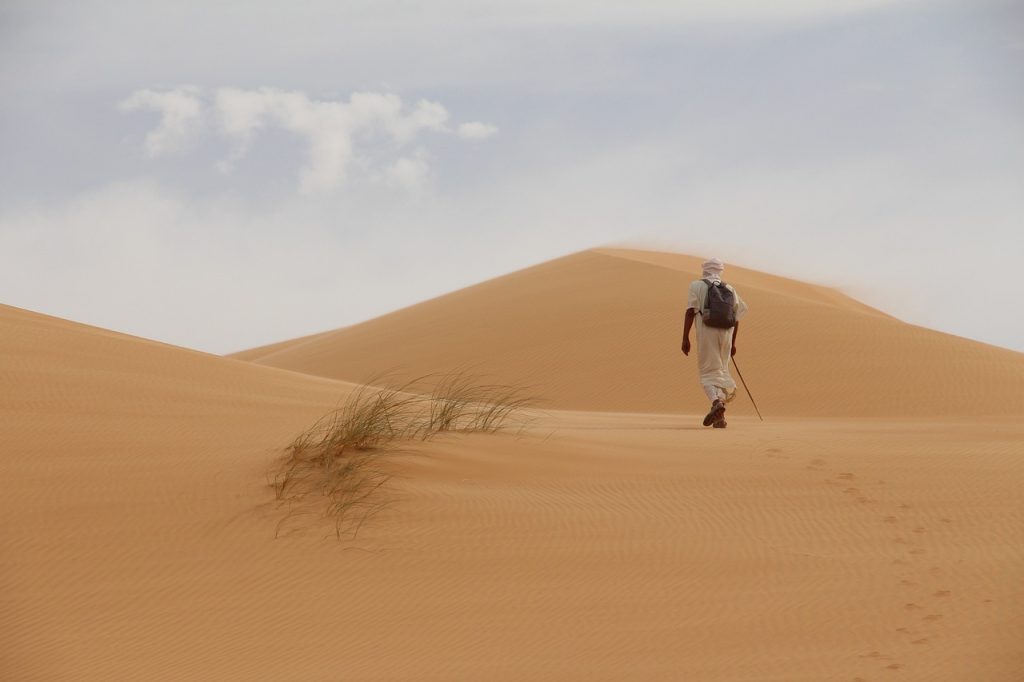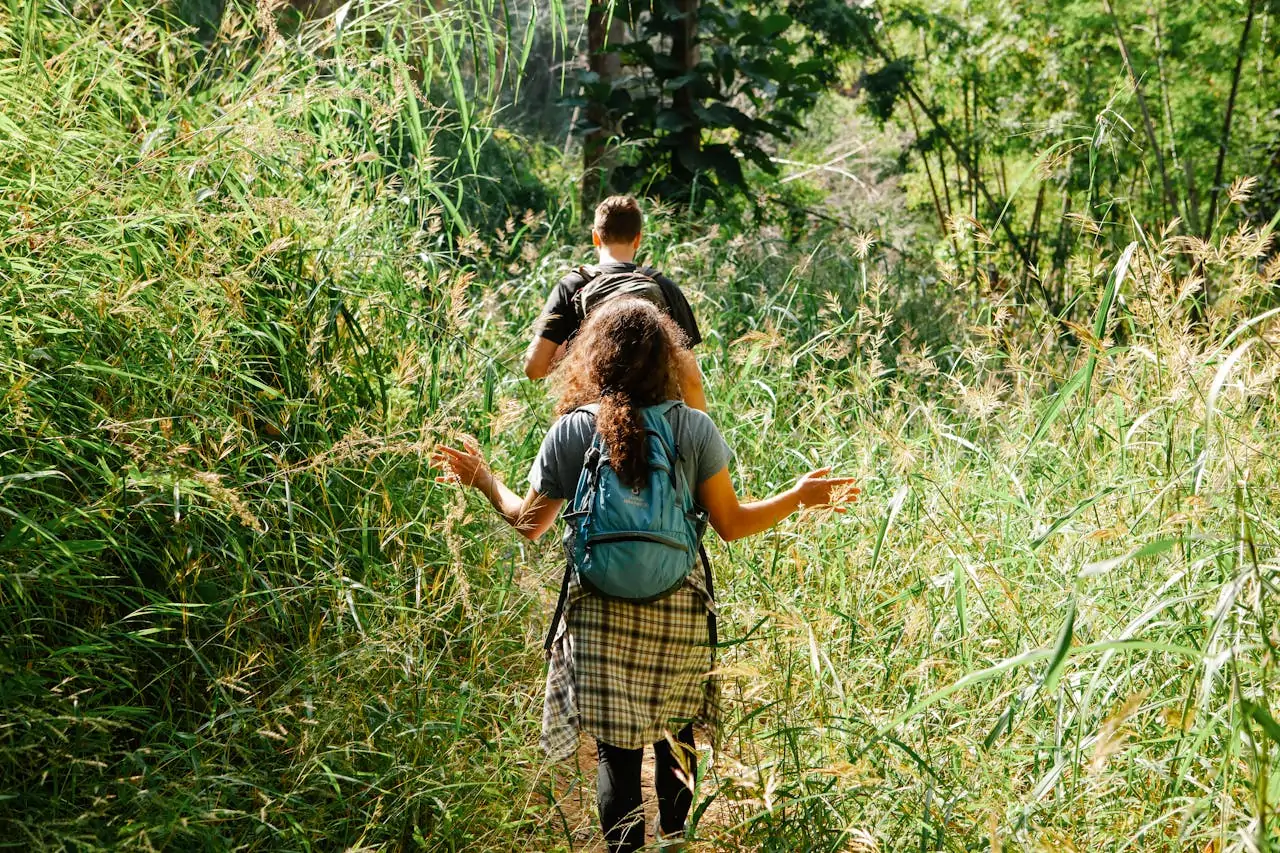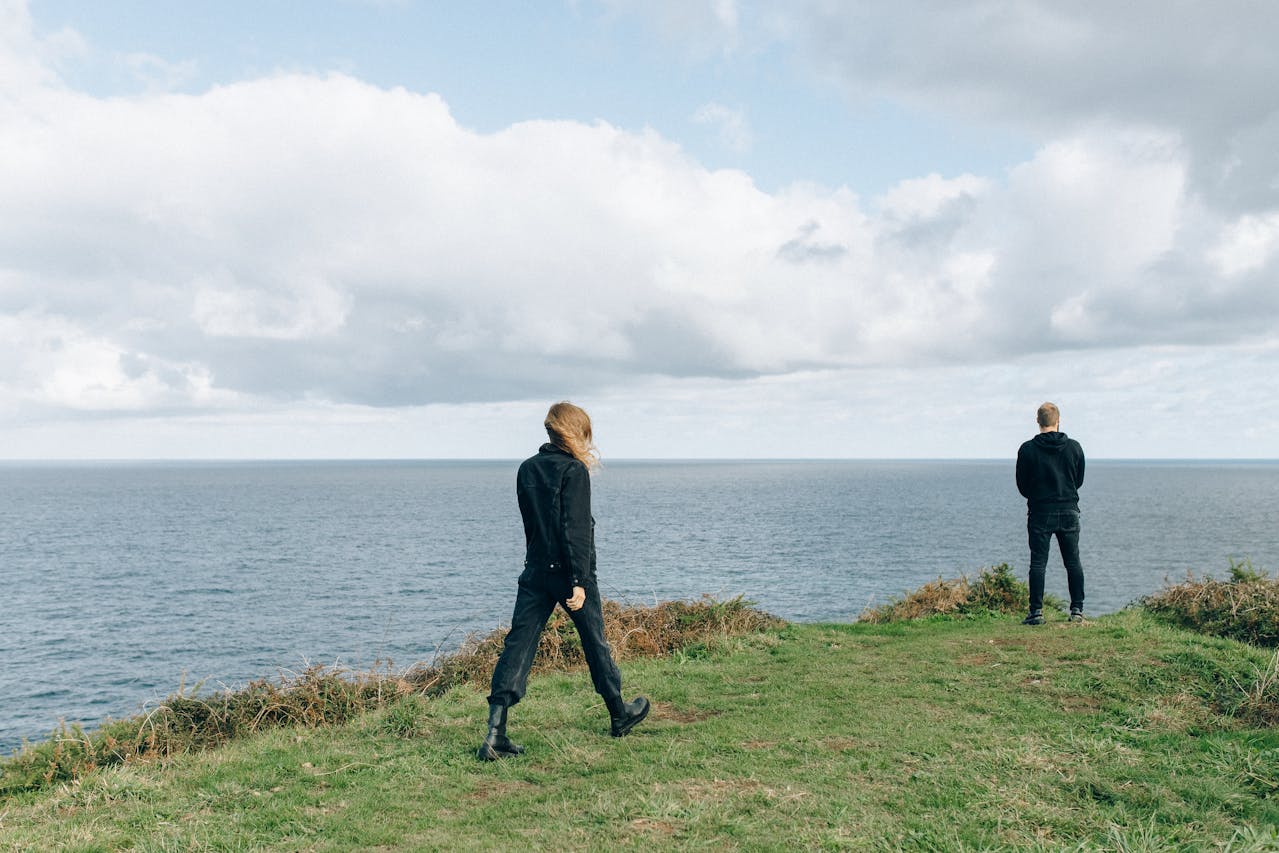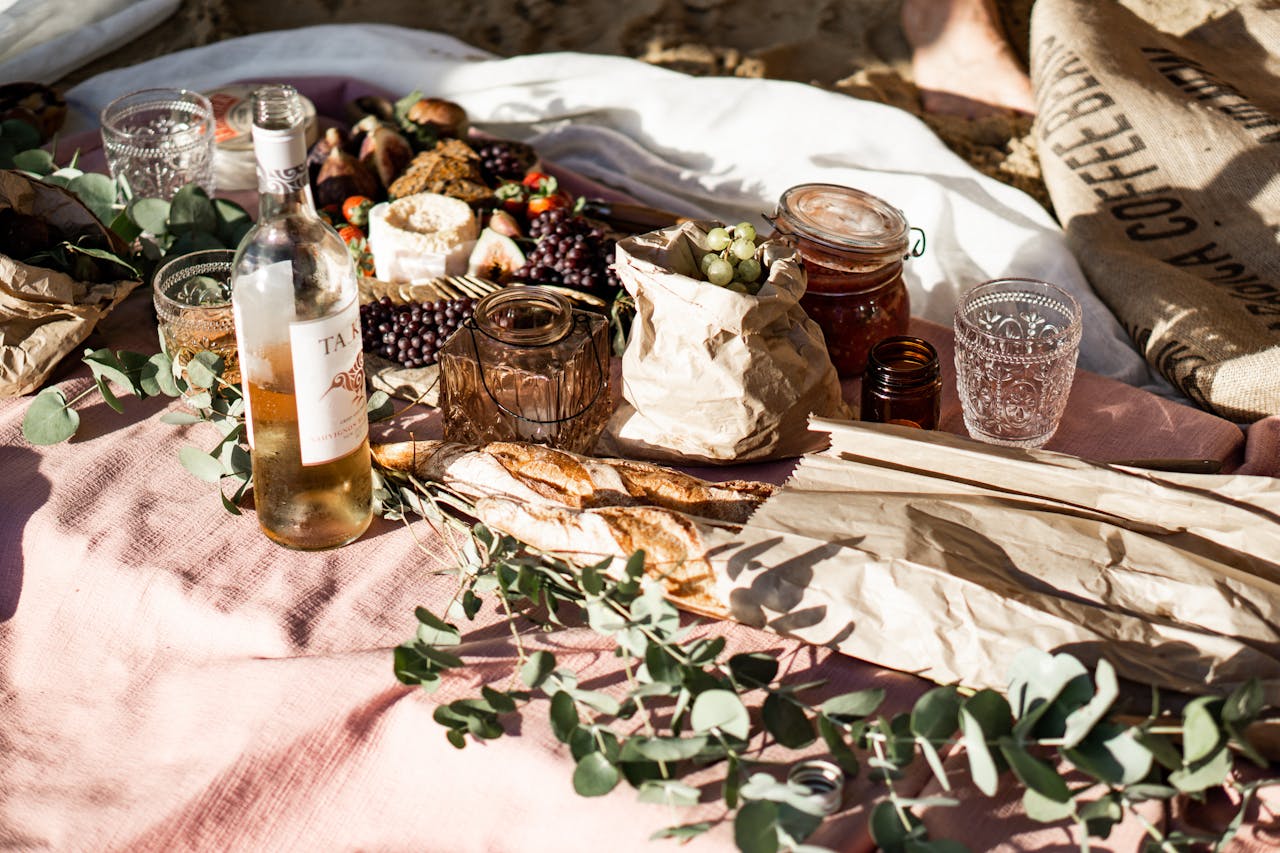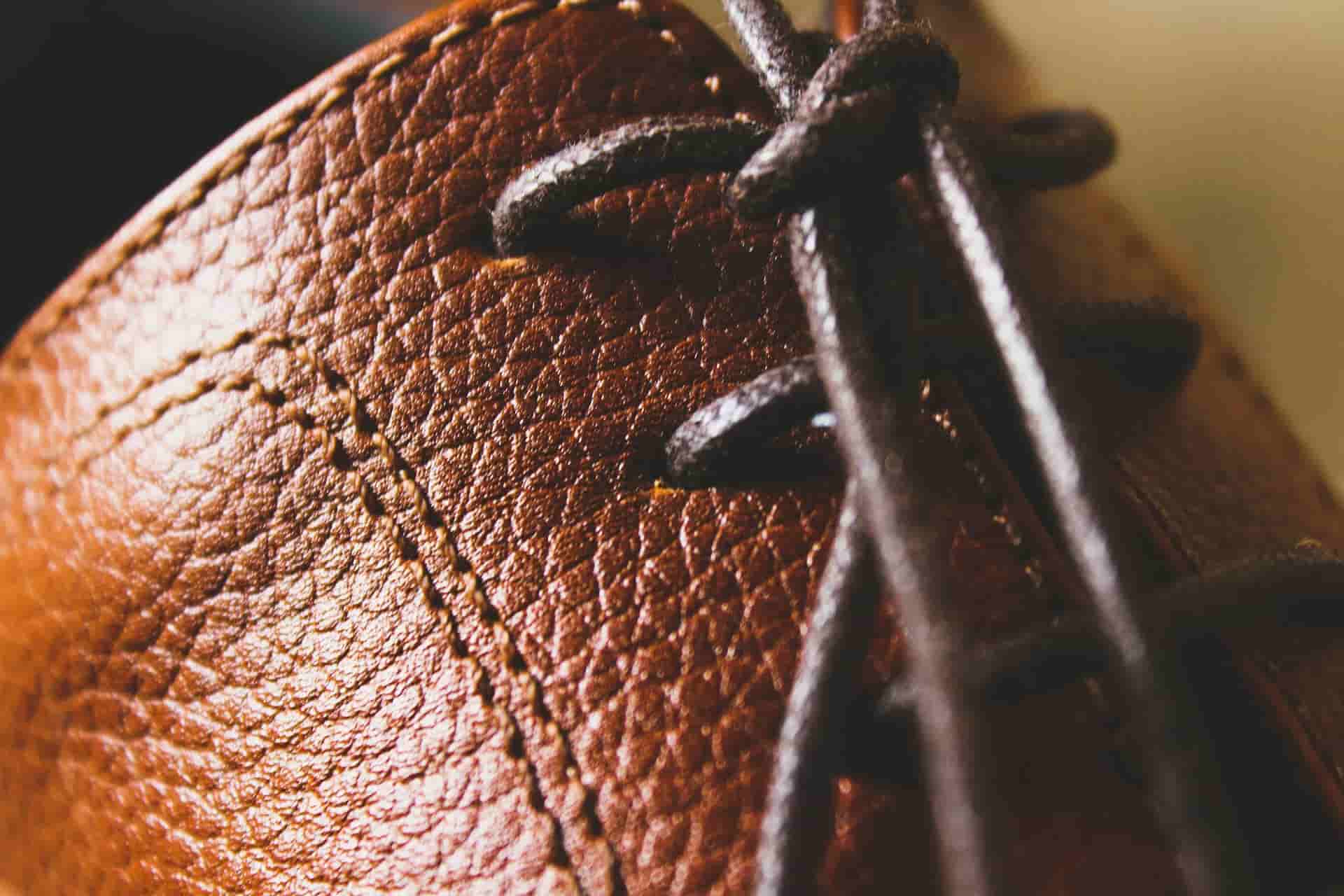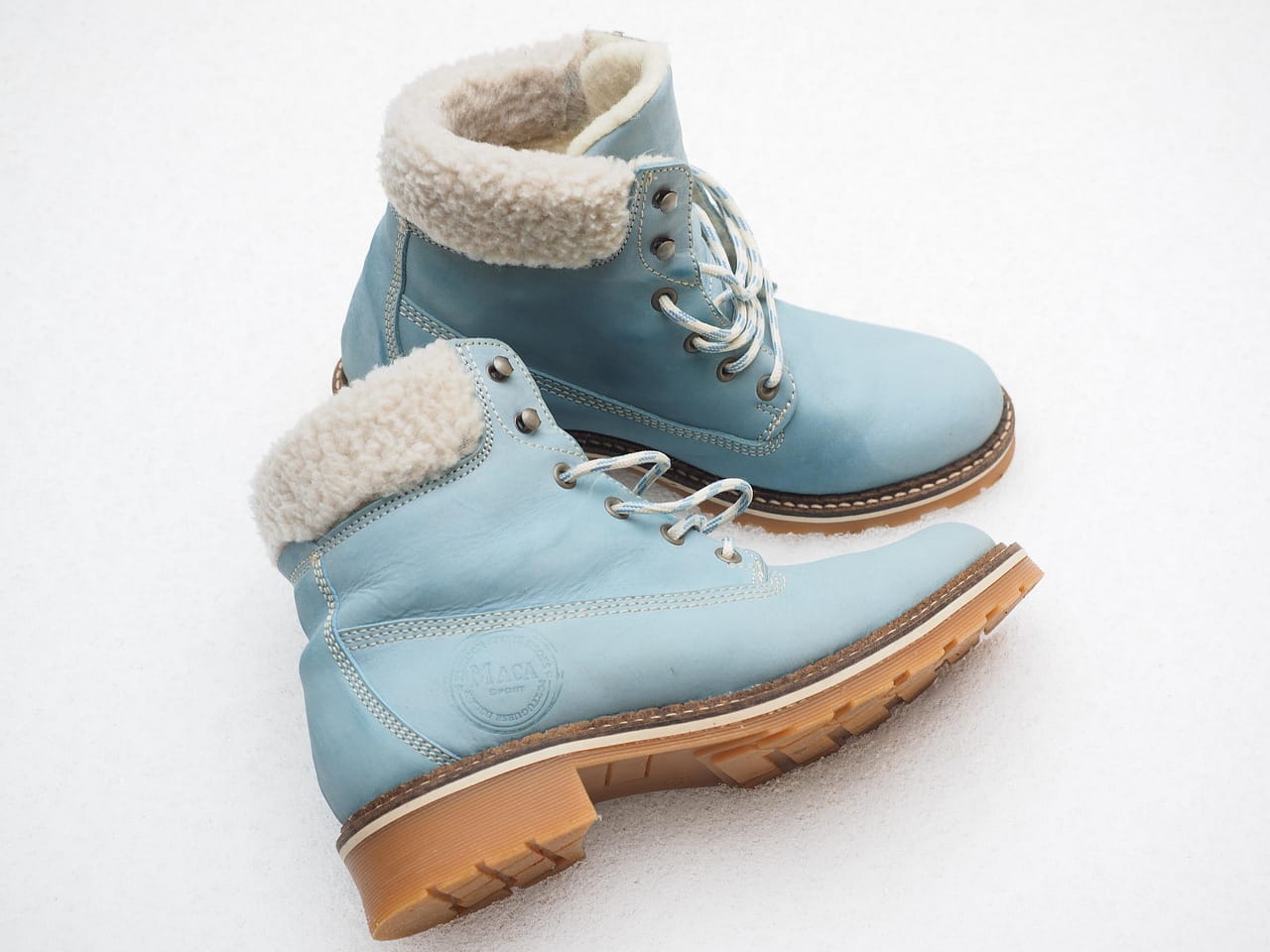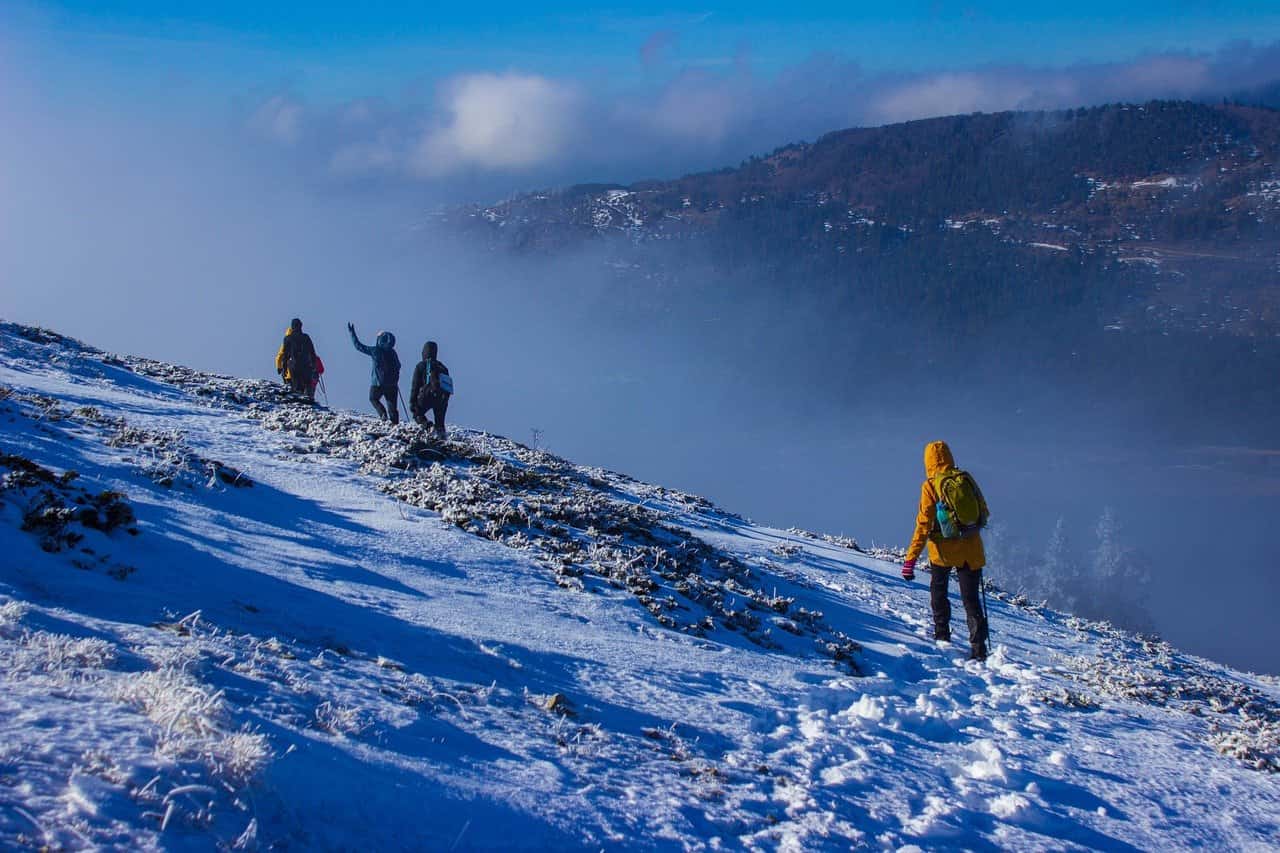When hiking in the desert, you need to wear desert hiking clothes because of the extreme heat and low humidity. In such dry conditions, sweat can evaporate quickly, making it hard for your body to cool down. In this guide, we’ll talk about what to wear to stay safe and comfortable in the desert.
This advice is only for hiking in hot weather. If you’re hiking in cooler times, like winter, you’ll need different clothes.
For hot, dry desert hikes, I recommend wearing cotton clothes. Remember, cotton is not good in cold or humid places, but it’s great for the desert. Also, choose light colors to help reflect the sun’s rays.
Avoid camouflage clothing. It’s not useful in the desert because if you get lost, you want to be easily seen. Wear bright colors that stand out against the desert landscape.
Long Pants
My first suggestion for desert hiking clothes is long pants. I know it’s really hot outside, but getting a sunburn on top of sweating and dealing with scratches from thorny plants is no fun. You need to protect yourself from the sun, which can burn you even on cooler days because of the strong UV rays in the dry desert air.
When choosing your desert hiking clothes, go for something loose-fitting. Even though people often say “cotton kills,” I actually prefer cotton in hot, dry places.
Loose clothes let air flow between the layers, which helps cool you down. Think about the loose, flowing clothes that people in desert cultures, like the Bedouins, wear.
They have thousands of years of experience in the desert, and you won’t see them wearing short shorts while hiking through the sand. Instead, they cover as much skin as possible to stay protected.
One of my favorite options is the 5.11 Tactical Pant (choose khaki, not black). These pants are 100% cotton and have lots of pockets. I usually buy them a size bigger so they fit a bit looser, which helps with comfort and airflow. Just make sure to use a good belt to keep them up since the oversized fit can make them slide down (avoid woven belts, as they wear out quickly).
Long Sleeve Cotton Shirt
The second suggestion for desert hiking clothes is a long-sleeved cotton shirt, your main goal in the desert should be to protect yourself from the sun. It’s better to work on your tan at the beach or in your backyard, not out in the desert far from any shelter.
Baggy clothes are a good choice because they allow air to flow around your body, which helps cool you down. Also, try to choose light-colored clothing for your desert hikes. Light colors reflect some of the sun’s UV rays, keeping you cooler.
In hot, dry deserts, cotton clothing can be helpful. Normally, in cold places, wearing wet cotton can make you lose heat quickly because it dries slowly.
But in the desert, where sweat evaporates super fast, cotton can actually be a good thing. It holds onto your sweat longer, giving your body time to cool down.
Just make sure you’re dry by nightfall since desert temperatures can drop quickly, and that cooling effect can turn into a chill.
A good choice for a desert hiking shirt is the Columbia Bonehead Long-Sleeve Shirt. It’s designed for fishermen but works really well in the desert too.
Underwear
Wearing the right underwear is super important when you’re hiking. If your underwear isn’t right, you can end up with chafing, which can turn a fun hike into a really uncomfortable experience. If you’re new to hiking in hot weather, you’ll quickly learn why the right underwear matters so much.
Unlike your shirt and pants, I don’t recommend cotton underwear for hiking. Cotton can hold a lot of moisture, which can make chafing worse and even lead to skin problems like jock itch. Instead, look for “moisture-wicking” synthetic materials that help keep you dry.
Avoid loose boxers or super tight underwear like “tighty-whities” because they can bunch up and cause chafing in uncomfortable spots.
I recommend wearing nylon boxer briefs, like the ones made by Ex Officio. These are made from a nylon/spandex blend that helps keep you dry and stays in place during long hikes.
Broad Brimmed Hat
Your head is your most important tool when you’re out hiking, so it’s crucial to protect it. The back of your neck and shoulders are also areas that get a lot of sun exposure, so you need to cover them up too. If you go on a desert hike without the right headgear, you’re asking for trouble.
A baseball cap isn’t enough protection because it leaves your ears, neck, and shoulders exposed. Instead, you should wear a hat with a wide brim that covers as much of your face, neck, and shoulders as possible.
If you really love your baseball cap and can’t imagine hiking without it, you can add a bandanna to cover your neck and ears, like the French Foreign Legion. Just make sure your ears are covered too, or you might end up with a painful sunburn later.
I prefer a wide-brimmed hat for better coverage as a must-have desert hiking clothes. I use a Tilley Hat (choose a light color like khaki), but a more affordable option with UV protection, like the Columbia Booney II Sun Hat, will also work. Just make sure whatever hat you choose has a chin strap, so it doesn’t blow off in the wind.
Straw cowboy-style hats can also be a good option, but make sure they aren’t made of felt.
Don’t forget to apply sunscreen on any exposed skin, especially if you have fair skin.
Base Layer
While I typically don’t wear a base layer other than the underwear I mentioned earlier, some people prefer to wear a cotton T-shirt under their long-sleeve shirt to help keep moisture on their bodies.
You can give it a try, but I find it can be a bit too warm. If you start feeling too hot, you can always take the T-shirt off and stash it in your backpack.
Jacket
Desert temperatures can change a lot between day and night, sometimes dropping as much as 40 degrees. This happens because the desert air has very little moisture, which normally traps heat near the ground.
Without much moisture, the heat escapes quickly into space, unlike in a jungle where the temperature stays more consistent.
Even if you’re just planning a day hike, it’s a smart idea to pack a light jacket or flannel in your backpack. If something goes wrong and you end up stuck overnight, it can help prevent hypothermia. A sprained ankle is bad enough, but dealing with hypothermia at the same time is even worse.
Being prepared for emergencies is really important in the desert. It can be a matter of life and death, so take it seriously. Mother Nature doesn’t care if you survive; to her, you’re just another part of the ecosystem.
You might also want to throw a space blanket in your pack. They weigh almost nothing, take up very little space, and could save your life in an emergency.
Quality Boots
I can’t emphasize this enough: rocky terrain and sharp thorns can really hurt your feet, and your feet are your only way back home unless someone carries you. If you’re going to spend a lot of money on any piece of desert hiking gear, make it your boots.
I recommend wearing hiking boots rather than hiking shoes. High-top boots give your ankles extra support when you’re walking over rocks and protect them from thorns. The ground in the Desert Southwest, especially in places like Big Bend National Park, is tough on your feet.
Your boots should have sturdy soles that aren’t too flexible, as overly flexible soles can hurt your feet on uneven rocks. The soles should also have good grip to prevent slipping but be durable enough not to wear down quickly. Avoid black boots unless you want your feet to overheat in the sun.
I used to wear Keen hiking boots, but after a rough hike left my feet sore, a friend suggested I try Lowa Hiking Boots. After one hike in them, I was sold. At 235 pounds, I need all the support I can get for my feet and ankles. These boots fit more snugly than my previous ones, so my toes and heels don’t get as much abuse.
Remember, don’t skimp on your boots. Foot injuries are easy to get and hard to heal. Invest in quality boots, and your feet will thank you.
Socks
Don’t be afraid to look a little dorky—wear socks that go up past the top of your boots. They don’t have to be knee-high, but they do need to protect your legs and ankles from chafing.
Just like with underwear, you don’t want to wear cotton socks. Keeping your feet clean and dry is really important. It’s a good idea to pack an extra pair of socks in case your feet get wet or if you have to stay out overnight unexpectedly.
Wigwam makes excellent socks for hot weather hiking, but you can also find decent ones at places like REI or Academy. Just don’t go too cheap, as some of the lower-quality socks lose their elasticity quickly, and you’ll end up fishing your socks out of the bottom of your boots all the time.
If you want extra protection from blisters, consider getting sock liners. They’re not foolproof and can make your feet a bit warmer, but they help reduce the rubbing from your boots. The toe socks from Injinji work well for me.
Sunglasses
In the bright desert, sunglasses are really important because there’s not much moisture in the air to block the strong sunlight. The sun’s rays can reflect off the rocks and ground and hurt your eyes, like getting snow blind.
It’s a good idea to get wrap-around sunglasses that protect both the front and sides of your eyes. Make sure they block UV rays, or they could actually hurt your eyes more by letting in too many harmful rays.
If you wear glasses, getting prescription sunglasses is great, but if you can’t, clip-on sunglasses or ones that fit over your regular glasses are also good options.
Water
I know water isn’t something you wear, but it’s one of the most important things you need to have in the desert.
I never go on even a short walk without a full hydration pack. Hydration packs are great because carrying water by hand isn’t enough, and you might not drink enough if you have to keep taking off your backpack to reach your water bottle.
The only problem with hydration packs is that the water bladders can sometimes break. So, it’s a good idea to keep most of your water in a stronger container, like an MSR Dromedary Bag, which can fit in your backpack. Just keep a little water in the hydration pack so you don’t have to refill it all the time during your hike.
If the weight feels heavy, drink some water to make your load lighter.
Don’t forget: You need at least one gallon of water per person each day, and drink before you start feeling thirsty!

